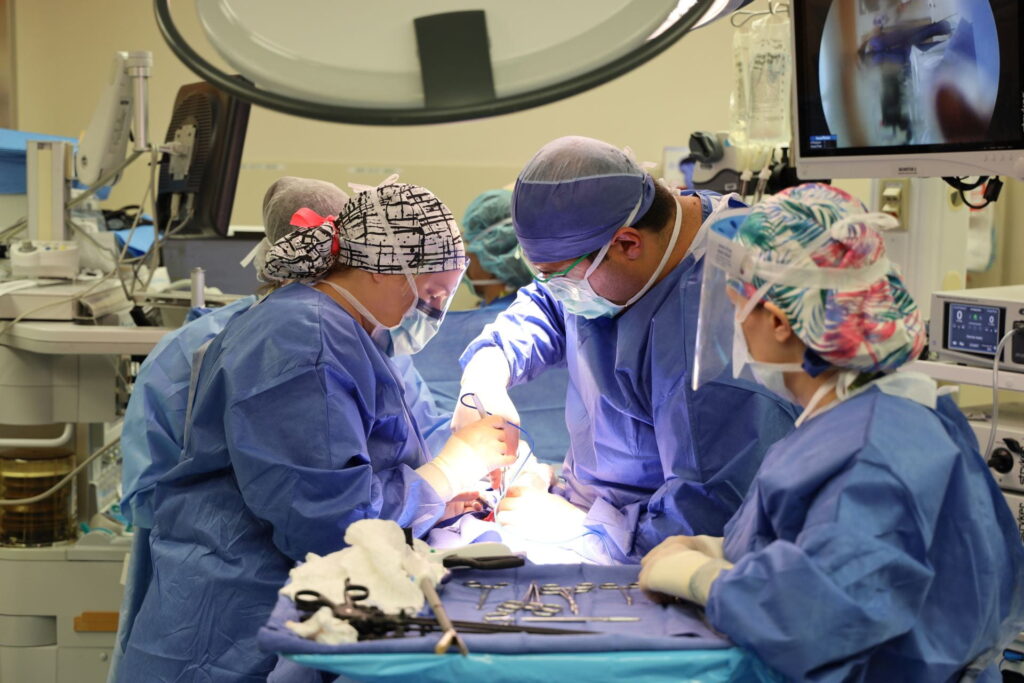
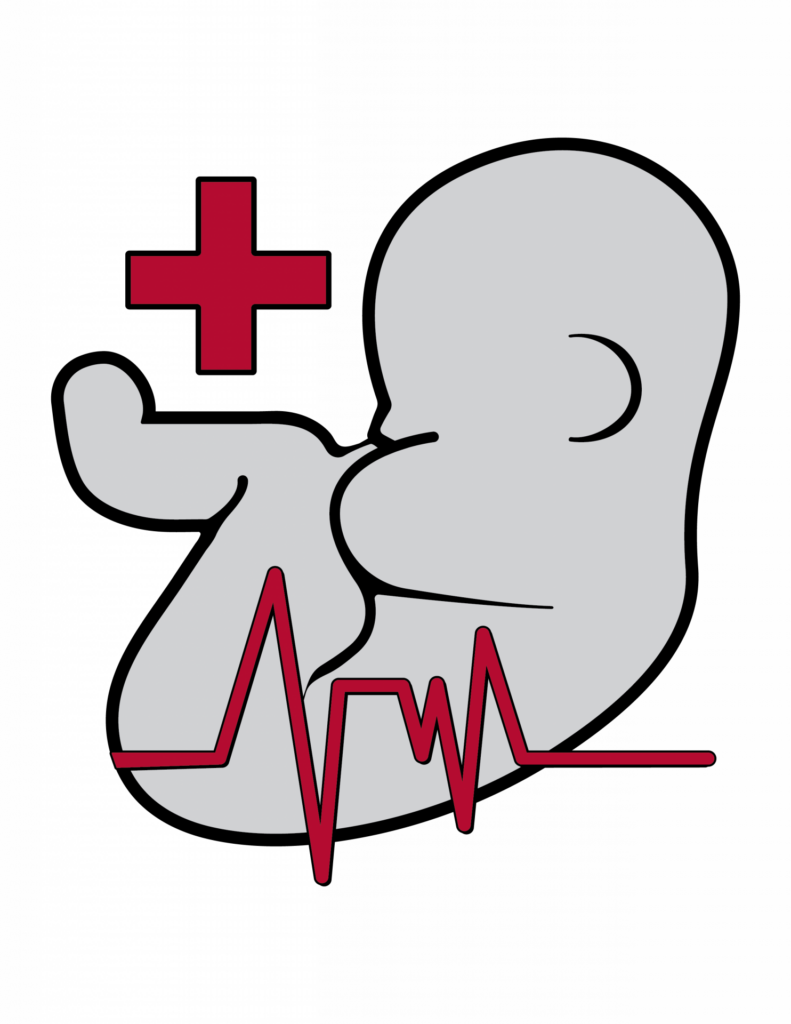
This division offers comprehensive treatment for a spectrum of pediatric and congenital conditions, burns and trauma. Board-certified pediatric surgeons offer compassionate, advanced care in a child-friendly environment at St. Louis Children’s Hospital. The division is a regional center for open fetal surgery, performs minimally invasive surgeries and treats many types of tumors. Faculty are actively involved in many areas of research, and leads in education, with a pediatric surgery fellowship approved by the American Council for Graduate Medical Education.
1,718
Operating room cases
12,868
Visits
7
Faculty
131
Office procedures
48
Clinical research studies
$346,830
Research funding
Division of Pediatric Surgery | 2021 Annual Report
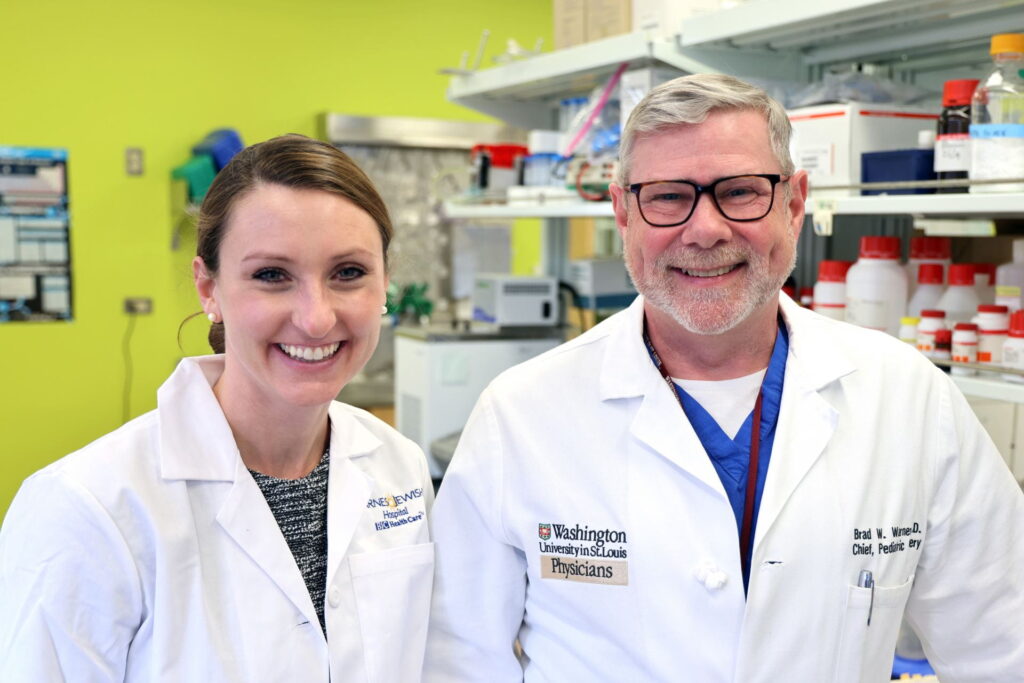
A recent study from Washington University School of Medicine in St. Louis suggests that one type of high-density lipoprotein (HDL) has a previously unknown role in protecting the liver from injury. This special type of “good cholesterol,” called HDL3, protects the liver by blocking inflammatory signals produced by common gut bacteria. The study was published earlier this year in the journal Science.
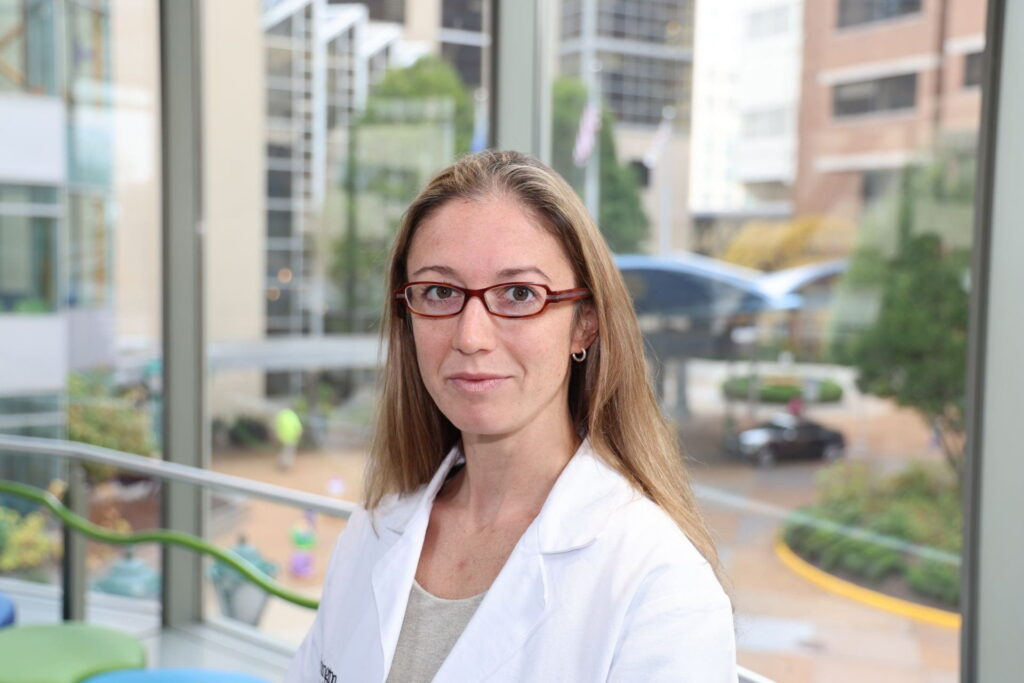
Washington University pediatric surgeon Jesse Vrecenak, MD, is part of a multidisciplinary team of experts at the Barnes-Jewish Hospital Fetal Care Center who care for mothers and babies with birth defects, including gastroschisis. Gastroschisis is a fetal condition affecting the abdominal wall. While a fetus develops, the muscles and skin of the abdomen do not form correctly. This leaves a hole through which the intestines, and other organs such as the stomach or liver, push to the outside.
Division of Pediatric Surgery Highlights | 2021 Annual Report
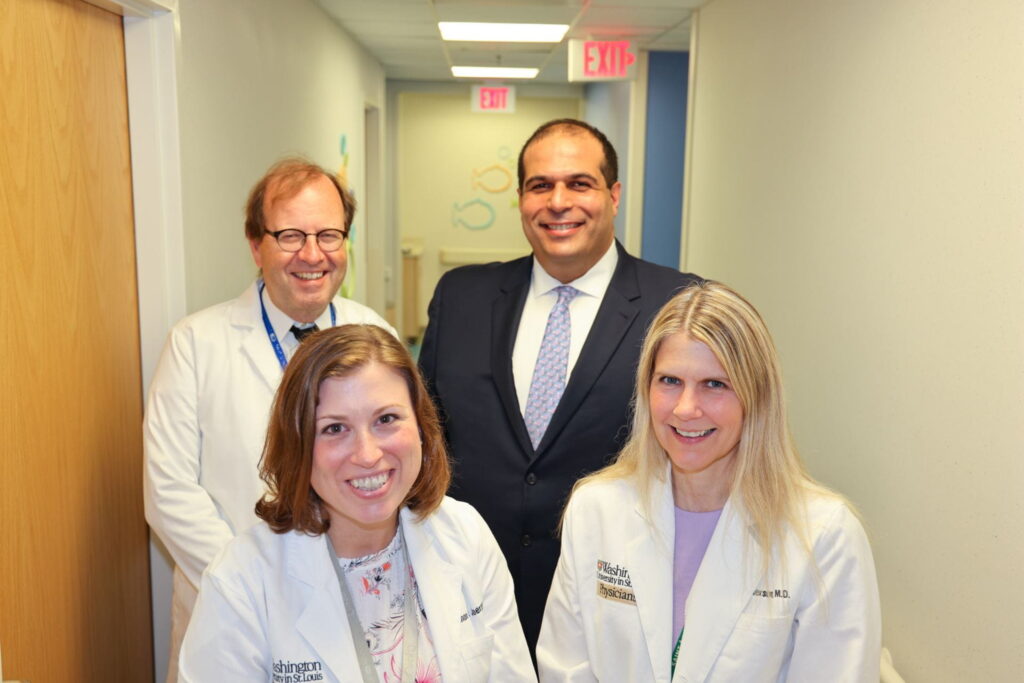
Clinical
The Division of Pediatric Surgery provides leading surgical care for newborns and children at St. Louis Children’s Hospital and Barnes-Jewish Hospital. The Emergency and Trauma Center at St. Louis Children’s Hospital is nationally recognized by the American College of Surgeons as a Level 1 Pediatric Trauma Center. The Pediatric Colorectal Center offers multidisciplinary treatment for complex conditions including Hirschsprung disease and anorectal malformations. Washington University pediatric surgeons are expanding to local communities, with facilities in South St. Louis County, Springfield, Missouri, and additional locations, ensuring that patients across the region have access to the highest level of pediatric surgical care.
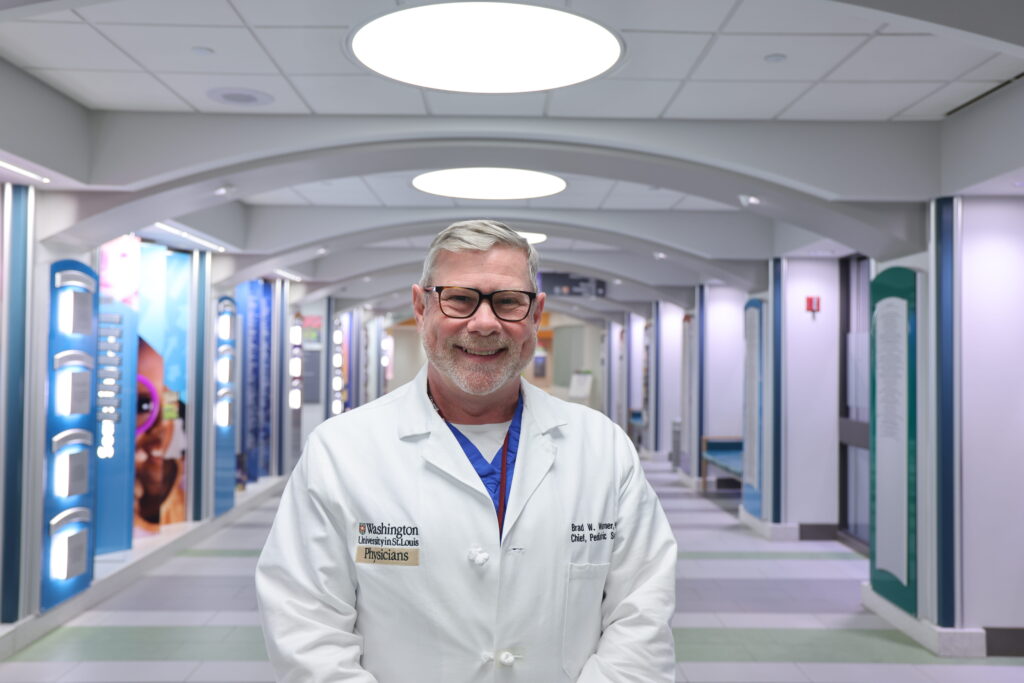
Research
Short gut syndrome is a condition in which the body cannot absorb enough fluids and nutrients because part of the bowel is missing or malfunctioning. The condition, also called short bowel syndrome, is among the most lethal in infancy and childhood. Division Chief Brad Warner, MD, alongside Division Chief of Gastroenterology Nicholas Davidson, MD, DSc, Professor of Medicine Deborah Rubin, MD, and Assistant Director of the McDonnell Genome Institute Li Ding, PhD, is leading a multi-PI project funded by an R01 grant from the NIH investigating liver injury after bowel resection in patients with short gut syndrome.
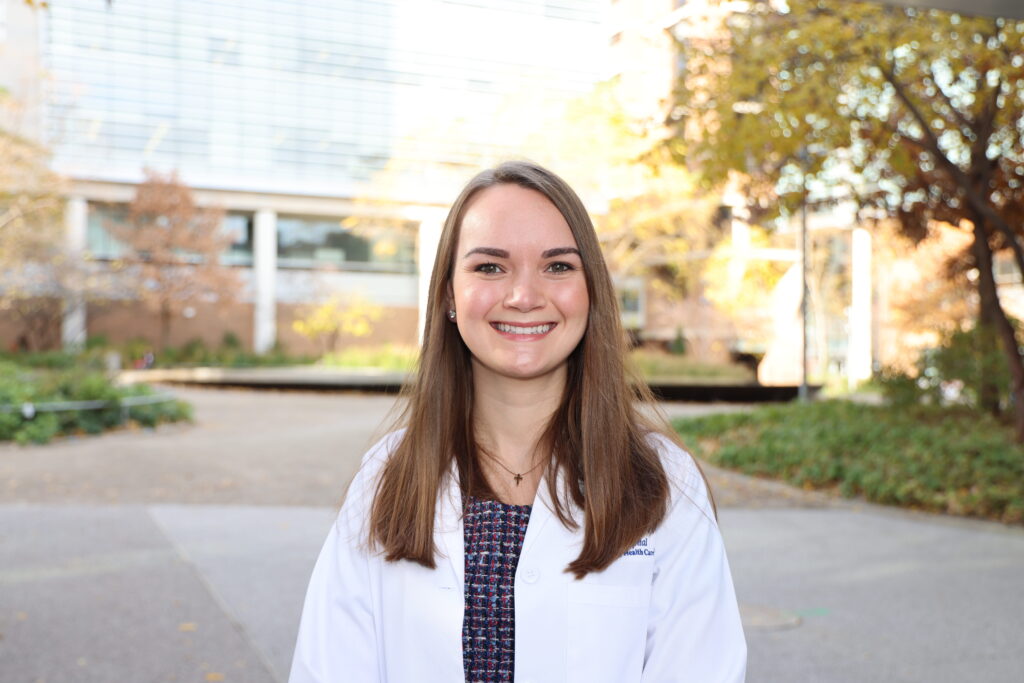
Education
Hannah Phelps, MD, a research resident in the laboratory of Division Chief Brad Warner, MD, received one of six Resident Research Scholarships from the American College of Surgeons (ACS) for 2021-2023 to study hepatic unfolded protein response in intestinal resection associated liver injury and fibrosis. The ACS scholarships are awarded to residents pursuing careers in academic surgery. “With the long-term career goal of becoming a pediatric surgeon-scientist, I look forward to the opportunity to work with and learn from this group of world-class researchers,” Phelps says of the Warner Laboratory.
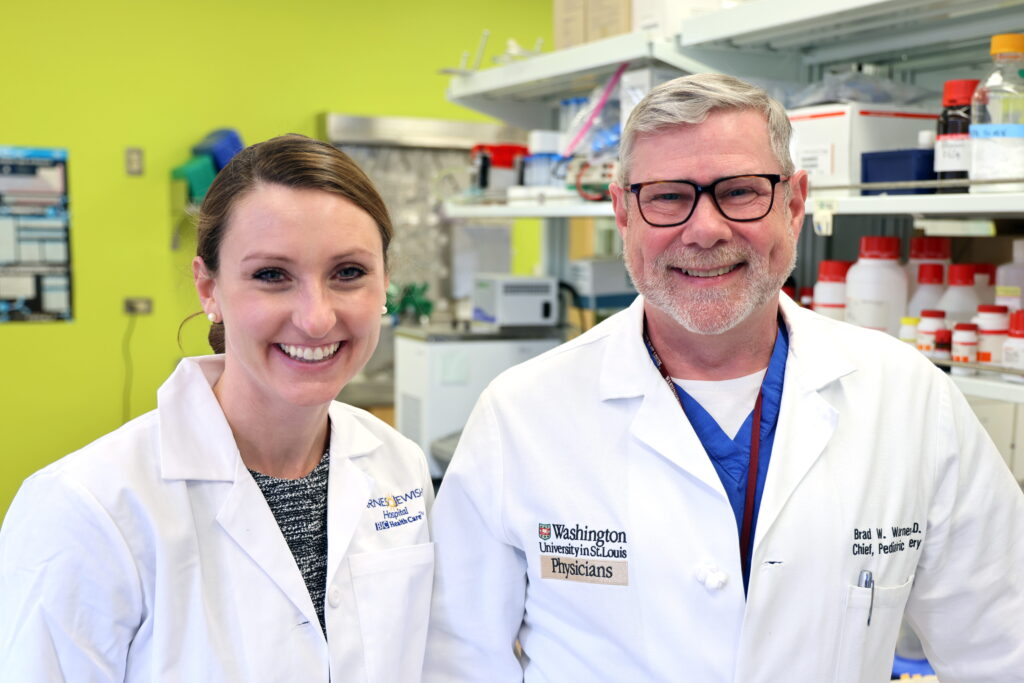
Preventing Liver Injury
A recent study from Washington University School of Medicine in St. Louis suggests that one type of high-density lipoprotein (HDL) has a previously unknown role in protecting the liver from injury. This special type of “good cholesterol,” called HDL3, protects the liver by blocking inflammatory signals produced by common gut bacteria. The study was published earlier this year in the journal Science.
The findings of this study are the result of a years-long collaboration between Division Chief of Pediatric Surgery Brad Warner, MD, and Gwendalyn Randolph, PhD, a professor in the Department of Pathology & Immunology. Warner and Randolph are co-principal investigators on an R01 grant studying the causes of fatty liver disease in patients with short bowel syndrome.
“Removal of most of the short bowel is sometimes necessary to treat infants and children with conditions like necrotizing enterocolitis,” says Warner, the Jessie L. Ternberg MD, PhD, Distinguished Professor of Pediatric Surgery. “Short bowel syndrome is a condition that arises following these procedures. This can lead tointestinal-failure associated liver disease, which is a major morbidity that is poorly understood.”
While studying lymphatic transport of fat in the intestine, general surgery resident Emily Jean Onufer, MD, MPH, saw that HDL3 travels from the intestine to the liver through the portal vein. Intestinal damage, such as in short bowel syndrome, allows for Gram negative bacteria to produce inflammatory lipopolysaccharides which travel in the portal vein to stimulate hepatic fibrosis, cholestasis, and steatosis. As it makes this journey, HDL3 binds to lipopolysaccharides, preventing from activating harmful macrophages that cause inflammation in the liver.
Onufer, who is co-author on the Science publication, completed her research in the Warner Laboratory, where she gathered data for the R01 grant and forged connections with the Randolph Laboratory.
“Dr. Onufer is a diligent, methodical scientist,” says Warner, who is chief surgeon at St. Louis Children’s Hospital. “She knew what questions to ask and how to find the answers. Her hard work and commitment to research invited the important collaboration that made this study possible.”
“Identifying the protective neutralizing effect of HDL3 against Gram negative bacteria allows for further studies to utilize this form of ‘good cholesterol’ as a future therapy for short bowel syndrome patients given their risk of developing intestinal-failure liver disease,” says Onufer. “This collaboration truly exemplifies the importance of melding the expertise of surgeon scientists, like Dr. Warner, with basic science research to target key clinical questions.”
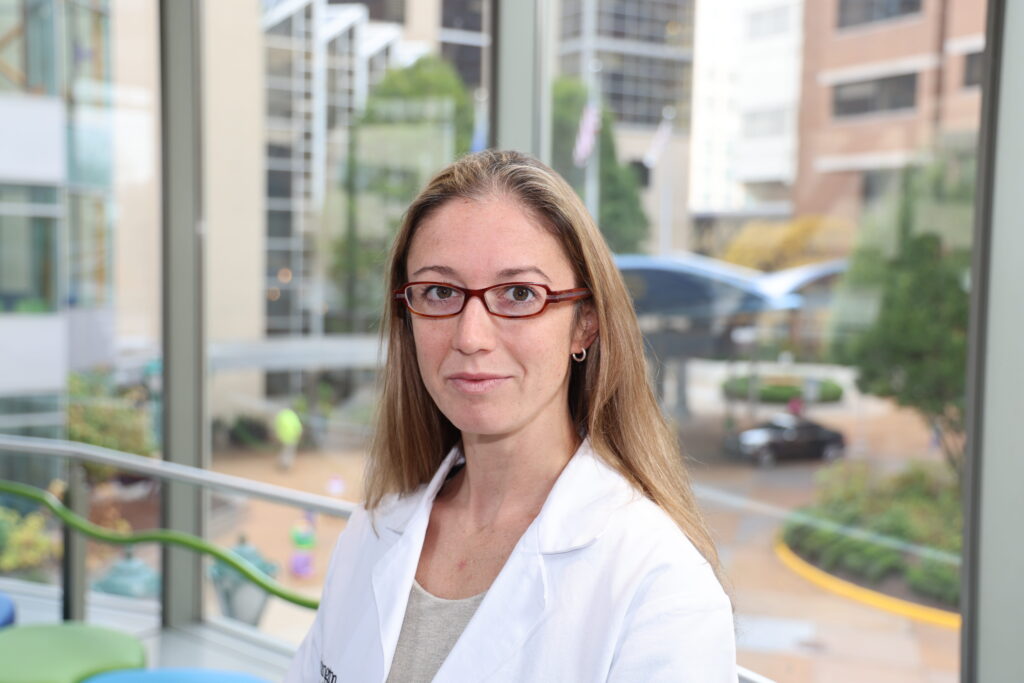
Delivering on Outcomes Research
Washington University pediatric surgeon Jesse Vrecenak, MD, is part of a multidisciplinary team of experts at the Barnes-Jewish Hospital Fetal Care Center who care for mothers and babies with birth defects, including gastroschisis. Gastroschisis is a fetal condition affecting the abdominal wall. While a fetus develops, the muscles and skin of the abdomen do not form correctly. This leaves a hole through which the intestines, and other organs such as the stomach or liver, push to the outside.
Vrecenak is site Principal Investigator for the Gastroschisis Outcomes of Delivery (GOOD) Study, a multi-center clinical trial researching the best time to deliver a baby with this condition. The two standard delivery options for newborns with gastroschisis include inducing labor at 35 weeks or allowing labor to begin naturally.
The GOOD Study, which is funded in part by the National Institute of Child Health & Human Development (NICHD) of the National Institutes of Health (NIH), aims to determine which of these delivery options leads to the best outcomes for patients.
“We are trying to pinpoint the ideal time of delivery for these babies, who have a complex situation,” says Vrecenak. “Inducing early labor may reduce the severity of the gastroschisis but comes with the risk of complications associated with prematurity. Waiting the full term avoids the risks of prematurity, though there is a chance of the bowel becoming more damaged. We want to find the right time to deliver for the best outcome for mother and baby.”
After delivery, most newborns with gastroschisis require surgery to put the intestines back inside the abdomen. Some smaller defects can be treated with a single primary reduction procedure, while larger defects require a staged reduction, where the surgeon moves the organs into the abdomen over a period of days before closing the hole.
Gastroschisis occurs in one out of every 4,000 births. The CDC notes that gastroschisis incidence is increasing, especially among younger mothers.
The GOOD Study is collecting data from more than 20 participating locations. Each location, including the Fetal Care Center, is a member of the North American Fetal Therapy Network (NAFTNet), an association of medical centers that perform advanced in-utero fetal therapeutic procedures. The researchers plan to generate the largest prospective, multicenter database of gastroschisis-related outcomes in the United States, providing data for future development of hypotheses and study designs regarding gastroschisis-related outcomes.